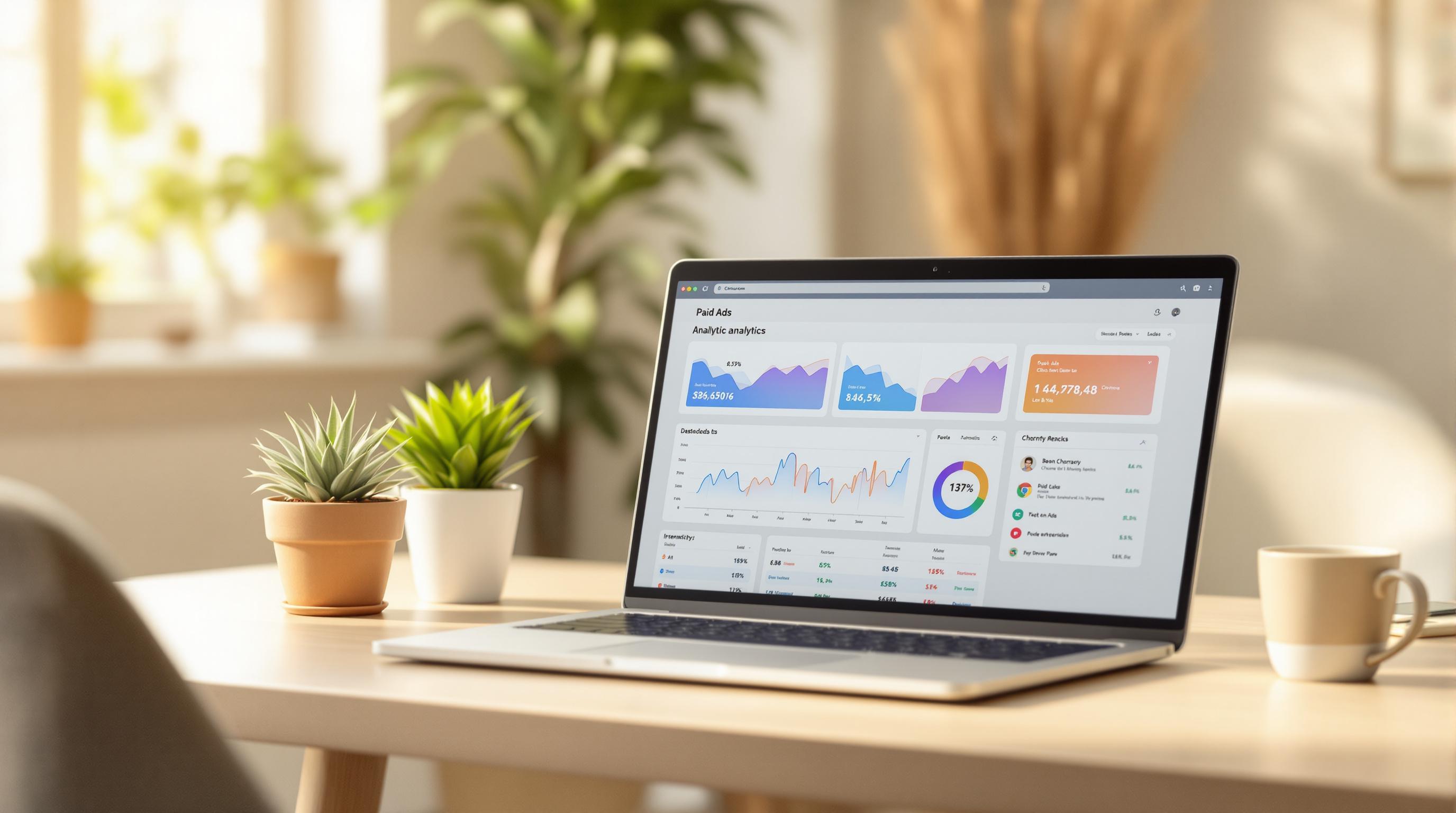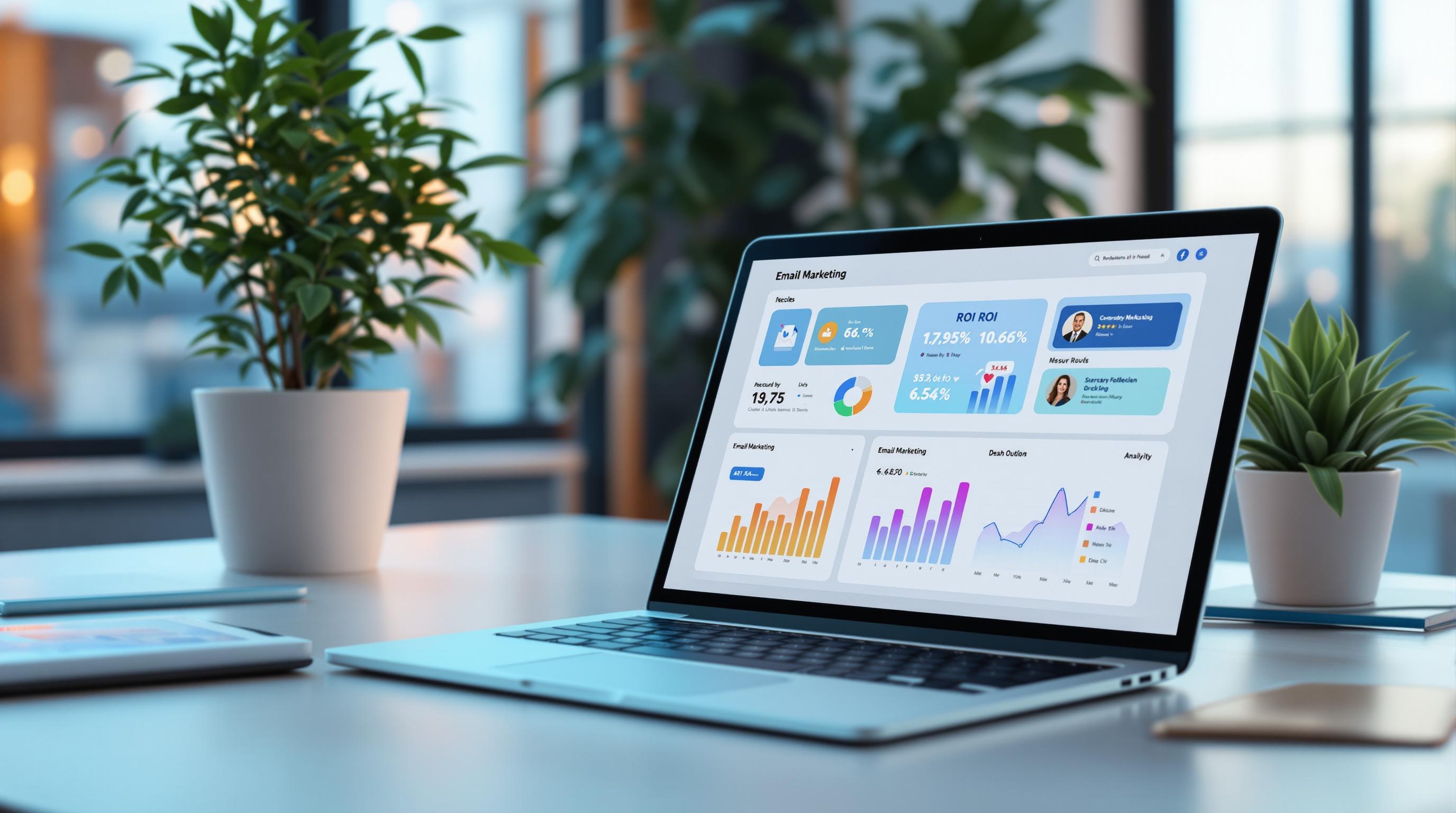Want to supercharge your lead generation? Here's how to set up an automated system in 7 steps:
- Know your target market
- Set up data gathering
- Create lead scoring
- Set up email systems
- Connect your CRM
- Add AI tools
- Check and improve
Why automate? 64% of marketers are already using AI and automation for lead gen in 2024. It works:
- Automated emails can boost click-through rates by 199%
- Cut marketing costs by up to 80%
- Free up 49% of sales team time wasted on cold calling
But it's not just about saving time. Automation can:
- Improve lead quality by 80%
- Increase conversion rates for 3 out of 4 companies
Ready to dive in? Let's break down each step to set up your automated lead generation machine.
Related video from YouTube
What is Lead Generation Automation?
Lead generation automation is like having a digital assistant that never sleeps. It uses tech to find, attract, and convert prospects into customers. And it's catching on fast.
Here's a surprising stat: 64% of marketers are already using AI and automation software to generate more leads in 2024.
Why? Because it's a game-changer. Here's what lead generation automation does:
- Boosts efficiency
- Improves lead quality
- Scales your efforts
Kritika, Senior Content Marketer at Uniqode, says:
"Automating lead generation from offline and online sources helps you save time, improve lead engagement, and boost sales conversions."
But that's not all. Salesforce found that automated emails can bump up click-through rates by 199% while cutting marketing costs by up to 80%. That's huge.
Think about your current process. How much time do you waste on data entry, follow-ups, or lead scoring? Automation handles all that, freeing your team to focus on strategy and building relationships.
Here's a quick comparison:
| Task | Manual Process | Automated Process |
|---|---|---|
| Lead Capture | Manual form entry | Instant data collection from multiple sources |
| Lead Scoring | Time-consuming analysis | Real-time scoring based on behavior |
| Follow-up | Individual emails | Triggered email sequences |
| Data Management | Prone to human error | Centralized, accurate data storage |
The best part? It works for all kinds of businesses. B2B software company? Local retail shop? There's an automation solution for you.
But remember: automation isn't about replacing humans. It's about making them more effective. It handles the boring stuff so your team can focus on what they do best: building relationships and closing deals.
As you explore lead generation automation, start small and test often. Keep your customer's experience front and center. Do this, and you'll be on your way to supercharging your lead generation efforts.
Tools You Need
To automate your lead generation, you'll need some key tools. Here's what you should consider:
CRM Systems
A good CRM is crucial. HubSpot CRM ($20/user/month) offers:
- Forms and popups for lead capture
- Email marketing
- Live chat and chatbots
For bigger companies, Salesforce Sales Cloud ($25/user/month) has advanced features and analytics.
Marketing Automation
These tools help nurture leads. ActiveCampaign ($29/month) includes:
- Behavior-based email sequences
- Lead scoring and segmentation
- CRM integration
B2B marketers might prefer Adobe Marketo Engage (custom pricing) for its sophisticated lead scoring.
Social Media Management
Sprout Social ($249/month) helps you find and engage leads across platforms with:
- Social listening
- Automated posting
- Analytics
AI-Powered Lead Generation
AI is changing the game. Leadfeeder ($139/month) uses AI to:
- Spot companies visiting your site
- Provide company info
- Integrate with your CRM
Email Extractor Tool
This Chrome extension helps build your lead database:
- AI-driven email extraction
- CSV download
- Automation features
Their pricing:
| Plan | Price/Month | Email IDs/Month |
|---|---|---|
| Starter | $8.99 | 5,000 |
| Growth | $39.99 | 50,000 |
| Enterprise | $139.99 | 1,000,000 |
Each plan includes automation and CSV download. Growth adds priority support, while Enterprise offers premium support for high-volume users.
7 Steps to Set Up Your System
Want to transform your business with automated lead generation? Here's how to do it in 7 steps:
Step 1: Know Your Target Market
First things first: figure out who you're selling to. Create detailed profiles of your ideal customers. Look at your current customer data. Who buys fastest? Who sticks around longest? This info helps you target the right people from the start.
Step 2: Set Up Data Gathering
Time to get those contact details. Use tools that do the heavy lifting for you. For example, the Email Extractor Tool chrome extension can grab up to 5,000 email IDs monthly. It's AI-powered and costs $8.99 for the Starter plan. No more manual digging for emails!
Step 3: Create Lead Scoring
Not all leads are created equal. Set up a system in your CRM to rank leads automatically. This way, your sales team can focus on the hot prospects first.
Step 4: Set Up Email Systems
Nurture those leads with automated email sequences. Tools like ActiveCampaign (starting at $15/month) can send personalized emails based on how leads behave. It's like having a tireless sales assistant working 24/7.
Step 5: Connect Your CRM
Make your tools talk to each other. Integrate your lead generation tools with your CRM. HubSpot CRM, for instance, offers forms, popups, email marketing, and live chat from $20 per user monthly. It's all about smooth data flow and easy lead management.
Step 6: Add AI Tools
Supercharge your efforts with AI. These smart tools can find emails, analyze behavior, and even write personalized messages. Gemini for Gmail ($20 per user monthly for Google Workspace) can process emails to understand sentiment and extract data.
Step 7: Check and Improve
Don't set it and forget it. Keep an eye on how your system's performing. Use the data from your CRM and email tools to track things like conversion rates and email opens. Tweak your automation regularly to get better results.
sbb-itb-8abf799
Tips and Common Mistakes
Automating lead generation can supercharge your business, but it's not without its challenges. Let's dive into some key tips and pitfalls to watch out for:
Keep Your Data Clean
Your automated system is only as good as its data. Bad data? Big problems. Gartner found that poor data quality costs organizations an average of $15 million per year in losses. Yikes! Here's how to avoid that mess:
1. Set up a data cleaning schedule
Don't let your database turn into a digital junkyard. Pick a day each month to sweep out the cobwebs and update your info.
2. Use data entry rules
Put some guardrails on your data entry. Set up rules that catch mistakes before they sneak into your system.
3. Train your team
Your team needs to know the "why" and "how" of data quality. Invest in training to make sure everyone's on the same page.
Create Smooth Workflows
Efficient workflows are the secret sauce of successful automation. Here's the recipe:
- Know your target audience inside and out
- Segment your leads for personalized communication
- Make sure all your tools play nice together
Don't Fall Into These Traps
1. Forgetting the human touch
Automation is great, but people still want to talk to... well, people. Mix in some personal interactions to keep things real.
2. Ignoring the rules
GDPR, TCPA - these aren't just alphabet soup. They're important regulations you need to follow. Ignore them at your peril.
3. Chasing numbers, not quality
A big pile of leads looks impressive, but are they any good? As one expert puts it:
"Any experienced marketer can recognize the importance of quality over quantity when attempting to expand a database of prospective customers."
4. Putting all your eggs in one basket
B2B buyers are channel-hopping ninjas. They use 10+ channels before making a purchase. Make sure your automation strategy can keep up.
5. Set it and forget it
Your automation strategy isn't a slow cooker. You can't just set it and walk away. Keep an eye on your data and tweak your approach as needed.
How to Track Results
Tracking your automated lead generation results is key to fine-tuning your strategy and boosting your ROI. Let's look at the must-watch metrics and how to crunch the numbers.
Key Metrics to Watch
Conversion Rate
This shows how many leads become customers. Here's the math:
Conversion Rate (%) = (Number of Conversions / Total Number of Leads) × 100
Say you got 1,000 leads and 50 became customers. That's a 5% conversion rate.
Cost Per Lead (CPL)
CPL tells you how much you're shelling out for each lead:
CPL = Total Marketing Spend / Total Number of Leads Generated
If you spent $5,000 and got 500 leads, your CPL is $10.
Return on Investment (ROI)
ROI is the big one. It shows your profit compared to what you spent:
ROI (%) = (Net Profit from Leads / Cost of Lead Generation) x 100
If you spent $10,000 on lead gen and made $15,000 in profit, that's a 50% ROI.
ROI in Action: A Real Example
Let's break down an actual ROI calculation:
| Metric | Value |
|---|---|
| Total Marketing Costs (TMC) | $8,000 |
| Number of Leads (L) | 12 |
| Lead to Opportunity Rate (LO%) | 25% |
| Sales Close Rate (C%) | 33% |
| Average Client Revenue (ACR) | $24,000 |
| Average Gross Profit Margin (GP%) | 35% |
Now, let's do the math:
- Qualified Opportunities = 12 leads × 25% = 3
- New Clients = 3 opportunities × 33% = 1
- Revenue = 1 new client × $24,000 = $24,000
- Gross Profit = $24,000 × 35% = $8,400
- ROI = (Gross Profit - TMC) / TMC = ($8,400 - $8,000) / $8,000 = 5%
This campaign pulled in a 5% ROI.
Boosting Your Numbers
Once you're tracking these metrics, it's time to pump them up:
- Sharpen your targeting: Use your data to zero in on your ideal audience. Better targeting means higher-quality leads and more conversions.
- Play with your emails: Email marketing can bring in $52 for every dollar spent. Try different subject lines, content, and CTAs to get more opens and clicks.
- Clean up your email list: Email lists shrink by about 22.71% yearly. Ditch inactive subscribers to boost engagement and cut costs.
- Send more emails (but don't go crazy): Businesses sending 5-10 monthly campaigns see 2X higher click-through rates than those sending 2 or fewer. Just don't spam your subscribers.
- Get sales and marketing on the same page: Companies with aligned teams are 3X more likely to crush their new customer goals. Make sure both teams are pulling in the same direction.
Wrap-Up
Automating your lead generation isn't just a nice-to-have. It's becoming a must for businesses that want to grow and stay competitive. Let's recap our 7-step journey:
1. Know Your Audience
It's not just about collecting data. It's about using that data to make real connections with your target market.
2. Smart Data Gathering
Tools like the Email Extractor Tool can supercharge your lead collection. Even small businesses can tap into AI-driven automation, with plans starting at $8.99/month for up to 5,000 email IDs.
3. Lead Scoring That Works
Automated lead scoring helps your sales team focus on the hottest prospects. It's about maximizing your conversion potential.
4. Email Automation Magic
Automated email sequences can turbocharge your nurturing process. Fun fact: companies using email automation have seen conversion rates jump by up to 77%.
5. CRM Integration
Your CRM is the heart of lead management. Connecting all your tools creates a smooth flow of information, powering smarter decisions.
6. AI-Powered Insights
Adding AI tools to your stack isn't just trendy. It's transformative. These smart systems can spot patterns and opportunities that humans might miss.
7. Continuous Improvement
Setting up your system is just the start. Regular analysis and tweaking are key to long-term success.
By embracing these steps, you're not just saving time. You're changing the game in how you attract and convert leads. Get this: businesses using marketing automation report generating up to 451% more qualified leads. That's not just an improvement. It's a whole new ballgame.
Here's what Adam Crossling, Head of Marketing at Zenzero, has to say:
"By automating the process of lead production and saving you time and resources, automated lead generation is a worthwhile investment."
He's spot on. The time and resources you save can go into strategy, creativity, and building those crucial human connections that turn leads into loyal customers.
Remember, automation isn't about replacing the human touch. It's about enhancing it. Let machines handle the repetitive stuff, so your team can focus on what they do best: building relationships and closing deals.
As you put these steps into action, focus on quality over quantity. It's not about more leads. It's about the right leads. With a well-oiled automated lead generation machine, you're setting up your business for growth that lasts.
The future of lead generation is here, and it's automated. Ready to jump in?
FAQs
Can lead generation be automated?
Yes, lead generation can be automated. It's becoming a big deal in modern marketing.
Here's the scoop:
Automated lead generation uses digital tools to find and engage potential customers without constant human input. Think of it as a tireless digital assistant working around the clock to spot and nurture prospects.
Why does it matter? Because it's a game-changer for efficiency and results. Check this out:
- 64% of marketers are already using AI and automation for lead generation in 2024.
- Automated email campaigns can slash marketing costs by up to 80%.
Real-world proof? Growthscore, a B2B marketing agency, used automated email campaigns to snag 500 leads in just 72 hours back in March 2023. That's the power of smart automation at work.
The perks are pretty sweet:
- It's a time-saver, handling repetitive tasks so your team can focus on strategy.
- It scales like crazy, letting you reach hundreds of potential customers without breaking a sweat.
- It's smart about targeting, using AI to crunch data and find the best leads.
- It keeps things consistent in how you nurture leads.
But here's the thing: it's not magic. Deian, a big shot in agency success, puts it like this:
"Automated lead generation can save time, maximize ROI. However, it's neither a magic spell, nor a way to replace your entire marketing and sales team."
The human touch is still key for building relationships and sealing deals. Automation should boost your team's efforts, not replace them.
Want to get started? Here's how:
- Get clear on what makes a quality lead for you.
- Invest in some AI-powered tools for data collection and lead scoring.
- Set up personalized, automated email sequences.
- Keep an eye on how it's performing and tweak as needed.



